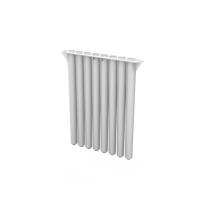Comparative genomic hybridization (CGH) is arguably the most significant technical development in the molecular cytogenetics era, and has contributed considerably to our further understanding of the cancer genome. In essence, DNA from a cancer specimen (test DNA) labeled with the fluorescence reporter molecule (or fluorochrome) is hybridized to a target genome in the presence of a differentially labeled control DNA (reference DNA). The two DNA populations compete for hybridization sites on normal metaphase chromosomes, so that the resulting fluorescence ratio is a reflection of the copy number change in the test sample. The copy number changes are mapped to their position on the chromosome template. Over recent years, the chromosomal template has been largely superseded by microarray formats (aCGH), in which changes in copy number can be mapped to the genome sequence at a high resolution. This advance allows the genome to be studied at an unbridled resolution and at a high-throughput, whilst posing several technical, statistical and interpretive challenges. It is the aim of this chapter to introduce the fundamental concepts of aCGH and to provide an overview of the steps involved in a successful aCGH processing. The materials required for BAC and oligonucleotide aCGH are included, with detailed methods and a range of refinements to improve the success rate and quality of aCGH data.






